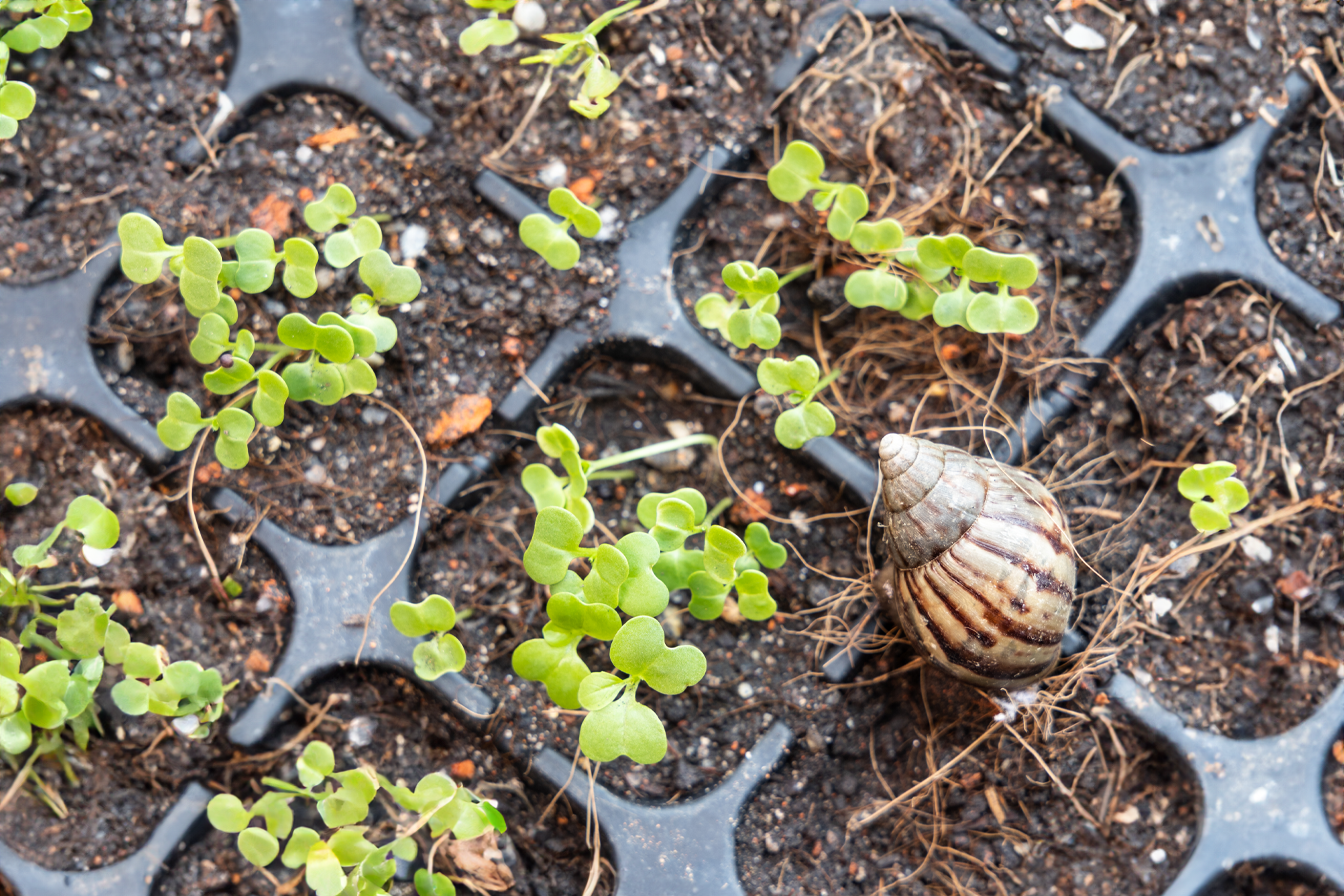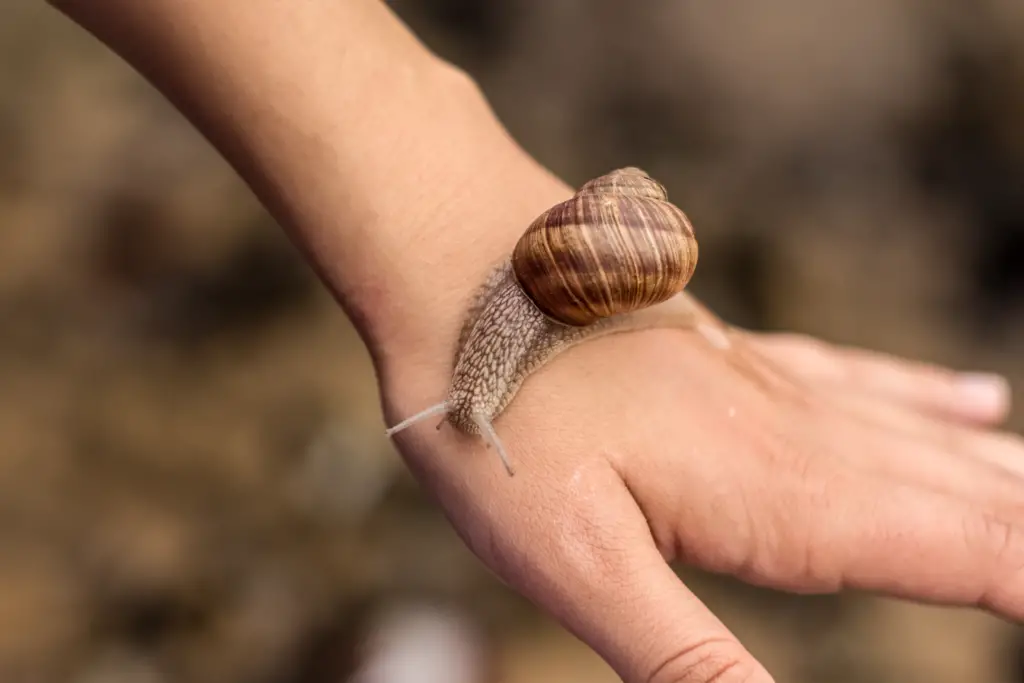
Gardening enthusiasts often find themselves asking: will snails eat my plants? The simple answer is yes, snails can indeed be a bane to gardeners, as they are known to feast on a wide variety of plant life. Their preferences include tender leaves and vegetables, making your garden a prime spot for these slow-moving critters to dine.
Understanding the eating habits of snails is key to protecting your foliage. Snails aren’t just indiscriminate eaters; they are particularly drawn to young, succulent plants and can cause significant damage overnight. It’s not all doom and gloom, though. There are a variety of methods to deter these garden pests, from natural deterrents to manual removal. By staying vigilant and implementing preventative measures, you can keep your garden safe from these uninvited guests.
Understanding Snail Behavior
In examining whether snails will feast on your beloved plants, it’s helpful to unravel their natural tendencies and what repeatedly drives them to the garden buffet.
Natural Diet of Snails
Snails are quite the opportunistic feeders, making a meal of whatever is readily available in their environment. Their dietary preferences can include herbaceous plant leaves, which they may consume with gusto. Snails don’t shy away from various other organic offerings either, such as fungal fruiting bodies, like mushrooms, which are a delicacy to them. Their flexible diet enables them to adapt to diverse habitats, devouring rotting vegetation and even the fungi residing within.
Snail Feeding Habits
When you observe snails in action, it’s clear their feeding habits are influenced by availability. These molluscs are primarily nocturnal and will emerge to dine under the safety of darkness. Their feeding strategy involves scraping or rasping food with a structure called a radula, which functions much like a tiny rasp. They’re also known to leave their signature: irregular holes in leaves or stem leftovers after munching on your greens. Keep in mind, snail damage can be confused with other pests, so proper identification is key to addressing your garden woes.
Common Garden Snails and Plant Safety
When you’re cultivating a garden, it’s important to know that common garden snails might view your plants as a meal, and certain plants are more vulnerable than others. Let’s explore how to identify these plants and which varieties are more resistant.
Identifying Vulnerable Plants
Common garden snails tend to prefer young, tender plants and can be particularly fond of leafy greens. Plants with fresh growth are more susceptible, and signs of snail activity include holes and ragged edges on the leaves. Refer to the observations from GrowYourYard.com to determine which of your garden plants might be at risk.
- Young, tender plants often attract snails, as do certain flowers and vegetables.
- Evidence of snail feeding includes visible holes and ragged edges on the leaves.
Snail-Resistant Plant Varieties
On the brighter side, some garden plants are less appealing to these slow-moving critters. By incorporating snail-resistant varieties such as ferns and certain herbs, you can reduce the likelihood of snail damage. Gardening Know How offers insights into plants that are less likely to become snail targets.
- Snail-resistant plants: Examples include ferns, certain herbs, and plants with thick or hairy leaves.
- Snails avoid: Certain aromatics and plants with tough foliage are typically snail-repellent.
Remember, creating a balance in your garden by choosing a mix of plants can deter snails and keep your garden healthy.
Protective Measures Against Snails
To safeguard your garden against snail damage, you’ll want to focus on implementing effective physical barriers and introducing natural predators for biological control. Let’s take a closer look at how you can incorporate these strategies in your garden.
Physical Barriers and Repellents
Creating physical boundaries around your plants can greatly reduce snail invasions. A ring of diatomaceous earth or crushed eggshells sprinkled around your plants acts as a deterrent, creating a sharp terrain that snails are reluctant to cross. Some gardeners also apply copper tape around the tops of pots or raised garden beds, which delivers a slight electric shock to snails, stopping them in their tracks.
On the other hand, strategic placement of natural baits away from your plants can divert snails from their targets. Substances like bran, oatmeal, or cornmeal can attract snails, drawing them to a specific location where you can remove them from your garden.
Natural Predators and Biological Control
Introducing natural predators into your garden is an organic way to control the snail population. Birds, frogs, and toads are all allies in the fight against snails and should be welcomed into the garden. Moreover, certain insects like ground beetles and even other species of snails can help keep the pest population in check.
For a targeted approach, purchase and release nematodes—microscopic parasites that are deadly to snails yet harmless to plants and pets. These biological agents provide a natural and hands-off way to diminish snail populations over time.
Monitoring and Managing Snail Populations
Managing snail populations in your garden involves meticulous observation and environmentally considerate removal methods. It’s essential to keep these populations under control to protect your plants from damage.
Regular Garden Inspection
To prevent snails from damaging your plants, it’s important to conduct frequent garden inspections, especially during the evening or early morning, as snails are more active at these times. Look for signs of snail presence, such as the silvery trails they leave behind or irregular holes in leaves. Identifying snail hotspots early can help you take prompt action to curb their population.
Safe Removal Techniques
When it comes to safe removal techniques, physical removal is one of the most straightforward. Wearing gloves, you can handpick snails and relocate them far from your garden. Alternatively, snail traps or barriers that snails can’t cross, such as copper tape, can be effective. These methods ensure that your plants are protected without the use of harmful chemicals.
Frequently Asked Questions
In this section, you’ll find practical advice and simple tips to address common concerns about snails in your garden.
What can I do to prevent snails from eating my garden plants?
To prevent snails from feasting on your garden plants, consider creating barriers such as crushed eggshells or diatomaceous earth around the plants. These materials can deter snails due to their sharp edges.
Are snails harmful to plants and should I remove them?
Snails can be destructive to your garden as they feed on a variety of live plant matter, sometimes causing significant damage. If you notice harm to your plants, it might be best to remove the snails.
What are some natural methods to deter snails from my plants?
Natural methods to keep snails away include using copper tape around planters or planting snail-repellent plants like lavender or rosemary. Attracting natural predators like birds or ground beetles can also help.
How can I identify if snails are responsible for damaging my plants?
You can identify snail damage by looking for irregular, hole-ridden leaves, often with a slimy residue, as snails tend to feed on the leaves during the night.
Is it possible for snails to coexist with live plants in an aquarium?
In an aquarium setting, certain snail species can live harmoniously with live plants by cleaning the tank and aiding in the breakdown of waste. However, the balance must be managed to prevent overpopulation.
How can I safely remove snails from my potted plants?
To safely remove snails from potted plants, you can handpick them during evening hours or set up traps using beer or yeast in shallow dishes placed near the pots.
Driven by a passion for those tiny creatures that rule our world, we at Bug Domain strive to be your go-to resource for information on insects.




